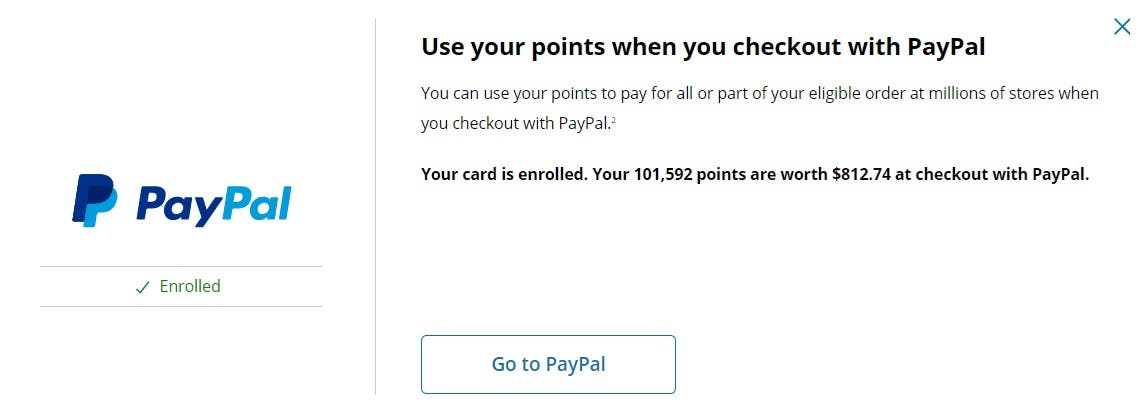How to maximize cash back with your credit card

The Bankrate promise
At Bankrate we strive to help you make smarter financial decisions. While we adhere to strict , this post may contain references to products from our partners. Here's an explanation for . The content on this page is accurate as of the posting date; however, some of the offers mentioned may have expired. Terms apply to the offers listed on this page. Any opinions, analyses, reviews or recommendations expressed in this article are those of the author’s alone, and have not been reviewed, approved or otherwise endorsed by any card issuer.
Key takeaways
- Maximizing cash back with a credit card requires moves on both ends of the spectrum — choosing the best credit card for your needs and getting the most value each time you redeem rewards.
- Flat-rate cash back cards, bonus category cash back cards, cash back apps, shopping portals and issuer-specific offers can all help you maximize the rewards you earn.
- Some strategies can help you secure better redemption values for your rewards, but these often vary by card and rewards program.
With expenses seemingly always on the rise, why not get a bit of cash back on your everyday purchases? The thing is, there’s more to maximizing cash back than just using a rewards credit card for spending and bills. You’ll also want to make sure you have the right cash back credit card to begin with, and that you have a handle on the best redemption options available and when to make them.
If you want some tips on how to pick the right card but you also want to squeeze the most out of your cash back rewards you can, keep reading for an overview of some simple moves you can work into your rewards strategy right away.
Choose the right cash back cards
The first step required to maximize cash back is ensuring you have the absolute best card (or cards) for the way you spend. Keep in mind that there are flat-rate cash back credit cards and bonus category cards to choose from, and that many consumers use a few different cash back credit cards to earn more rewards on everything they buy.
Compare sign up offers
If you’re in the market for a new cash back card, an initial sign-up bonus or welcome offer can accelerate your earnings. Fortunately, most cash back credit cards have excellent welcome offers with easy to meet minimum spending requirements.
Some of the best cash back sign-up bonuses available right now include:
- Wells Fargo Active Cash® Card — $200 cash bonus after you spend $500 on purchases within 3 months of account opening
- Capital One Quicksilver Cash Rewards Credit Card — $200 cash bonus after spending $500 on purchases in the first 3 months from account opening
- Bank of America® Customized Cash Rewards credit card — $200 online cash rewards bonus when you spend $1,000 on purchases in the first 90 days of account opening
- Ink Business Unlimited® Credit Card — $750 bonus cash back after spending $6,000 on purchases in the first 3 months from account opening
Evaluate spending habits
Before you switch up your credit card spending strategy or consider applying for a new credit card, you should spend some time analyzing your cash flow. How much money are you spending per month? Per year? What categories do you spend the most in? What do you ultimately want or need from a rewards credit card?
Start by using a budgeting app or a pen and paper to determine how much you spend each month and on what. Whether you’re ordering food delivery every Friday night or racking up travel miles with your favorite airline, make sure you understand where your money is going so you can choose a card that rewards you for the spending you’re already doing.
Understanding how much you spend helps you estimate what your rewards yield will be each year — making it easier to determine if an annual fee is worth it. If you don’t spend enough on a credit card each year to offset a card’s annual fee, that card is probably not the best option for you – opt for a card without an annual fee that fits your needs instead.
If your cash back card has a bonus offer, your rewards yield will likely be higher the first year you have the card. Once you’ve noted how you’re using your credit card, you can identify which type of credit card best suits your lifestyle and typical spending habits.
Combine rotating category cards with flat-rate cards
The best flat-rate cash back credit cards pair nicely with cards offering cash back in select bonus categories, but they’re also great for people who have no desire to keep track of rotating categories or earning caps.
To ensure you’re earning the maximum cash back value from your flat-rate cards, look for bills you can pay with a credit card. In many cases, you can put your bills on a credit card without incurring a processing fee. Consider paying your insurance premiums, utility bills, rent and subscriptions with your flat-rate card.
If you’re using multiple cards as part of your cash back strategy, it’s important to remember which cards are best used when. To stay organized, give each card a helpful nickname in your digital wallet or slip a hand-written legend into your wallet so you’re prepared to use the right card at the right moment.
But, which cards should you pair up for more rewards? Let’s say, for example, that your biggest expense each month is always the groceries required to stock your fridge. To get the most out of a card, you’d want to choose one that gives solid cash back on grocery purchases. The no-annual-fee Blue Cash Everyday® Card from American Express is one of the best credit cards for groceries, offering cardholders 3 percent cash back at U.S. supermarkets (up to $6,000 per year, then 1 percent). It also offers 3 percent back at U.S. gas stations and on U.S. online retail purchases (with the same $6,000 limit on purchases per category, then 1 percent).
Or maybe you’re more likely to eat out at restaurants or order takeout — if that’s the case, a card that rewards for dining out would make more sense.
The Chase Freedom Flex®* offers 3 percent cash back on dining (including restaurants, takeout and eligible delivery services), so it would be a great option for you. The Chase Freedom Flex is also a rotating bonus category card that earns 5 percent cash back on activated bonus category purchases each quarter (up to $1,500 in purchases, then 1 percent), yet it also earns 5 percent back on Chase Travel purchases and 3 percent back on drugstore spending.
Chase announces the bonus categories quarterly, so it can be tough to predict value or plan your expenses, but categories have historically included common everyday spending options like Amazon.com, grocery stores, gas stations and restaurants.
If your cash back card has rotating bonus categories, keep an eye on your issuer’s cash back calendar and activate the bonus categories each quarter. This way, you’re eligible for the bonus cash back rate. Otherwise, you’ll only earn the base rate, which is usually 1 percent on all your spending.
The Discover it® Cash Back, for example, earns 1 percent cash back on all non-category purchases, but also offers 5 percent cash back on up to $1,500 in activated rotating bonus category spending each quarter (then 1 percent). Make sure you’re enrolled in these offers and max them out whenever your spending allows.
Take advantage of issuers’ shopping portals
Before you shop, whether in-person or online, look for card-linked offers from your credit card issuer. If you have the Chase Freedom Flex or Chase Freedom Unlimited, for example, check the Shop through Chase portal to earn more cash back on all your purchases. Although the stores in the Chase shopping portal vary, they frequently include options like Walmart, Sephora, Best Buy and Macy’s. Other issues have their own portals — with Barclaycard you can shop on RewardsBoost, and with a Capital One card you get access to Capital One Shopping.
Some issuers offer additional rewards opportunities as well. American Express, Chase, and Capital One have programs — Amex Offers, Chase Offers and Capital One Offers, respectively — through which you can opt in to earn additional cash back from select retailers.
For example, with the Capital One QuicksilverOne Cash Rewards Credit Card, you can earn more cash back with particular retailers. To do so, log in to your Capital One account and navigate to the offers portal. In the portal, click “Get this deal” to be taken to a retailer’s site to shop and earn additional rewards at check out.
Generally speaking, these offers are found in your online account, have limited redemption windows and must be accepted individually. Cash back percentages vary from store to store, and there are usually limits that cap how much additional cash back you can earn.
Make the most of cash back apps
If you want to earn more cash back for online purchases, you often can increase your earnings through the use of cash back apps.
Cash back apps and sites like Dosh, Ibotta and Rakuten (formerly Ebates) give you a percentage of your spending back on qualifying purchases — on top of the cash back you’re earning on your credit card. For example, Rakuten lets you earn additional cash back when you click through the website before you shop with stores like Kohl’s, Macy’s, Nordstrom, Old Navy and Priceline.com.
Use your cash back wisely
While maximizing cash back earned on spending always makes sense, that’s only part of the equation. You also need to redeem your cash back in ways that make sense for your goals, whether you want to reduce the amount you owe on your credit card bill, you want to splurge for a fun purchase or you hope to utilize rewards to improve your finances in some way.
Consider the following tips to get the most out of your cash back rewards each year:
Redeem your cash back as statement credits
One of the easiest ways to redeem cash back is for statement credits to your account. This redemption effectively lowers the amount you owe on your credit card bill, thus helping you save money over time. If you sign up for the Wells Fargo Active Cash® Card to earn 2% cash back on all purchases and redeem your rewards for cash back, for example, you would ultimately save 2% on everything you buy with your card.
Just remember that rewards only get you “ahead” if you pay your credit card bill in full each month and avoid interest. If you’re paying 20% in credit card interest or more to earn 2% cash back, you’re not doing yourself any favors.
Save your cash back for a big purchase
You can also save up your rewards for a purchase you want to make down the line, whether it’s a splurge purchase you don’t want to cover in cash or you need to buy something for your everyday life. In either case, most cash back credit cards let you grow your rewards balance over time until you’re ready to use it.
Keep in mind: Using rewards for merchandise won't always get you the best value, and that you'll want to be strategic if you go this route. As an example, cash back credit cards from Chase offer 1 cent per point for statement credit redemptions but only 0.8 cents per point for purchases through Amazon.com or PayPal. If you wanted to use rewards for an Amazon or PayPal purchase, it would make more sense to pay for the purchase with your card outright then redeem rewards for statement credits after the fact.
Use your cash back to pay down debt
You can also use rewards to pay off some types of debt, either directly depending on the card you have or indirectly by redeeming for cash back. In terms of options that let you redeem rewards for debt payments, some Wells Fargo credit cards (including the Wells Fargo Active Cash® Card) let you redeem cash back toward a Wells Fargo mortgage in addition to options like gift cards and statement credits.
Many cash back credit cards also let you redeem rewards for a check in the mail, which you could deposit into a bank account and use for debt payments.
The bottom line
If you take a little time to spend strategically, you’ll be raking in cash back rewards before you know it. You can maximize cash back from your credit card by using one of the best cash back credit cards on the market for as many of your everyday purchases as possible.
In the meantime, you’ll also want to avoid carrying a balance so you won’t have to pay interest on your purchases. With the average credit card APR currently over 20 percent, racking up rewards won’t make any sense if you also rack up long-term debt.






